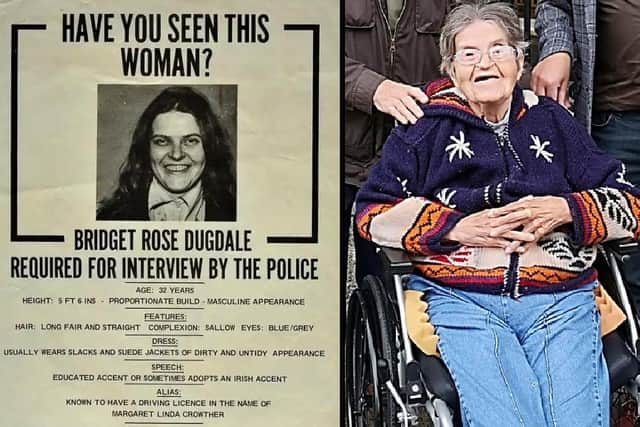Rose Dugdale: Super-rich English philosophy scholar turned-IRA bomber and art thief dies in her early-80s
and live on Freeview channel 276
Schooled in Kensington, central London, she later studied philosophy, politics and economics at Oxford, then did a doctorate in economics at Bedford College, London. She was unrepentant during later life about her violent crimes, and has now died in her early-80s – just after a biographical movie about some of her criminal exploits (titled Baltimore) has been released.
In a piece published in the magazine The Oldie just one week ago, her former school mistress Virginia Ironside remembered her as “a bit gawky and masculine-looking – a big girl with a deep voice” who showed “intelligence, generosity and, yes, even kindness”.
Advertisement
Hide AdAdvertisement
Hide AdHer becoming an IRA member was “the last thing I would have imagined” wrote Miss Ironside, who described Dugdale’s “stultifying” home life: frocks for daytime, formal dress for dinner, and with every visitor greeted by a curtsey.
Dugdale may be best remembered for her participation in a huge art heist at the Russborough House stately home in County Wicklow, during which some 19 paintings worth millions – including ones by 17th century masters Johannes Vermeer and Peter Paul Rubens – were stolen.
She was later caught with those paintings in Co Cork. However, her greater legacy concerns blood rather than paint.


While awaiting trial for the Wicklow thefts in 1974 – one year after she had already been convicted of robbing artwork belonging to her parents – Time Magazine reported that as well as stealing paintings she had also been “charged with smuggling firearms and explosives” into Northern Ireland (she ended up getting a nine year term, but was out in just six years).
Advertisement
Hide AdAdvertisement
Hide AdDugdale also talked proudly in a 2012 documentary called Mná an IRA – Women of the IRA – of being “involved in the bombing of Strabane” by loading explosives into milk churns and trying to drop them by helicopter on an army barracks (an attack which did not kill anyone).
A new book about her by author Sean O’Driscoll also details her work as a weapons designer for the IRA after her release from jail.
A review of the book in The Guardian says that she helped develop a type of Semtex rocket launcher which was used in south Armagh and Belfast and helped to create “a powerful new explosive that was detonated outside the fortified Glenanne barracks in May 1991, killing three soldiers and seriously injuring 11”, plus the Baltic Exchange bomb in April 1992 which killed three civilians, including a 15-year-old girl.
It quotes the author Mr O’Driscoll as saying: “Rose Dugdale did not kill anyone directly, but she was indirectly responsible for the deaths of a lot of people.”
Advertisement
Hide AdAdvertisement
Hide AdA 2011 interview with An Phoblacht notes that Dugdale had joined Sinn Fein after her stint in jail.
She told the magazine: “My background had me believe that armed struggle was the only way forward but the revolutionary army that was the IRA had achieved its principal objective, which was to get your enemy to negotiate with you. "They did that with amazing skill and ability and I can’t help but respect what was done in terms of the Good Friday Agreement. “I did what I wanted to do. I am proud to have been part of the Republican Movement and I hope that I have played my very small part in the success of the armed struggle.”